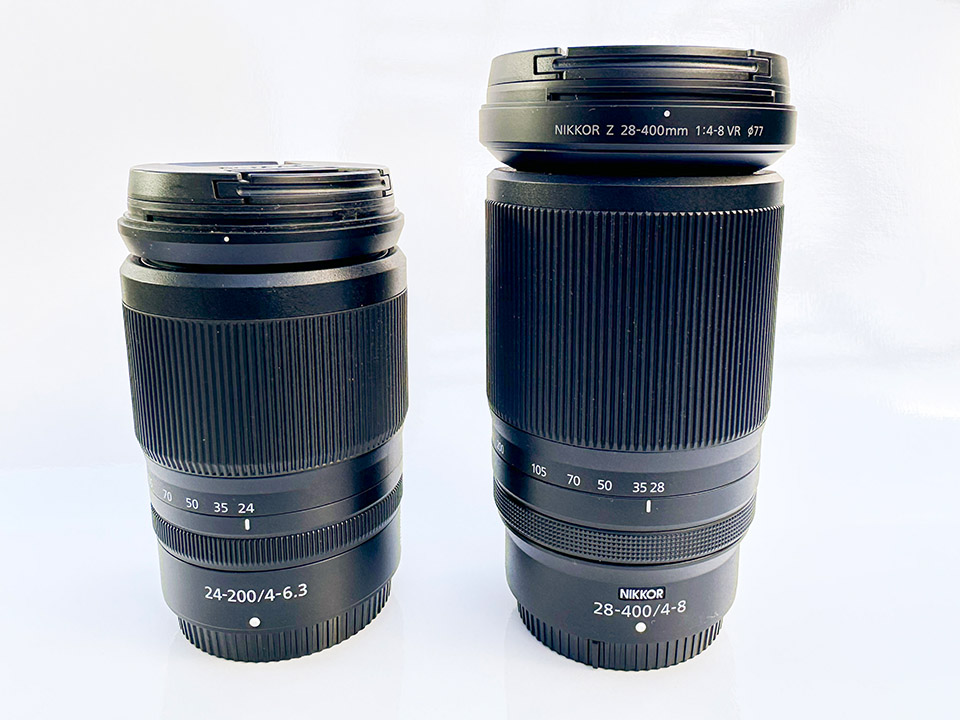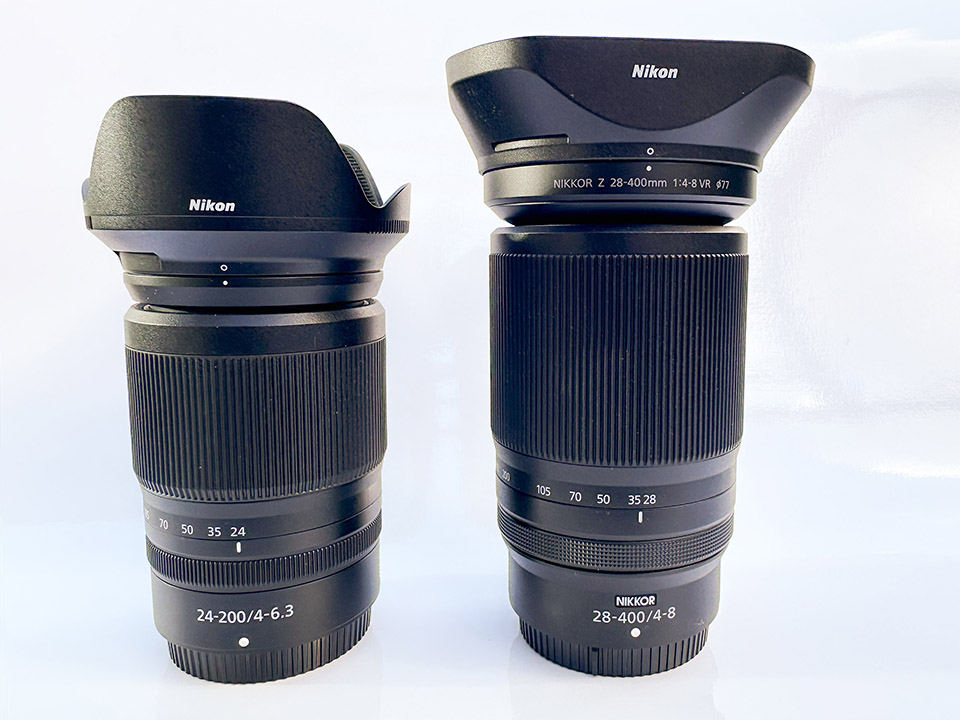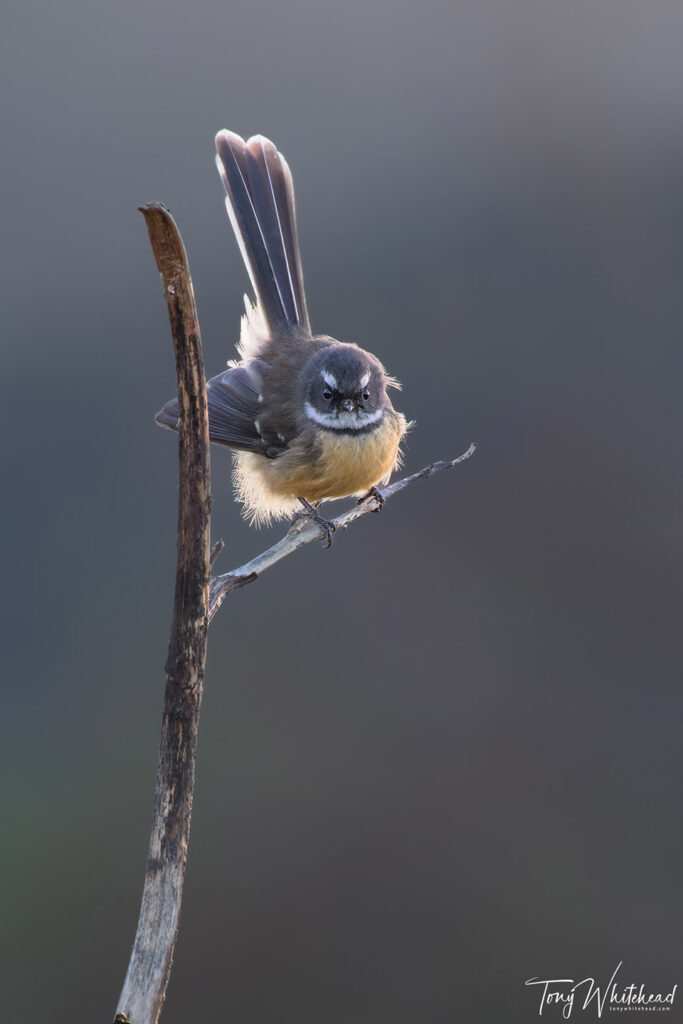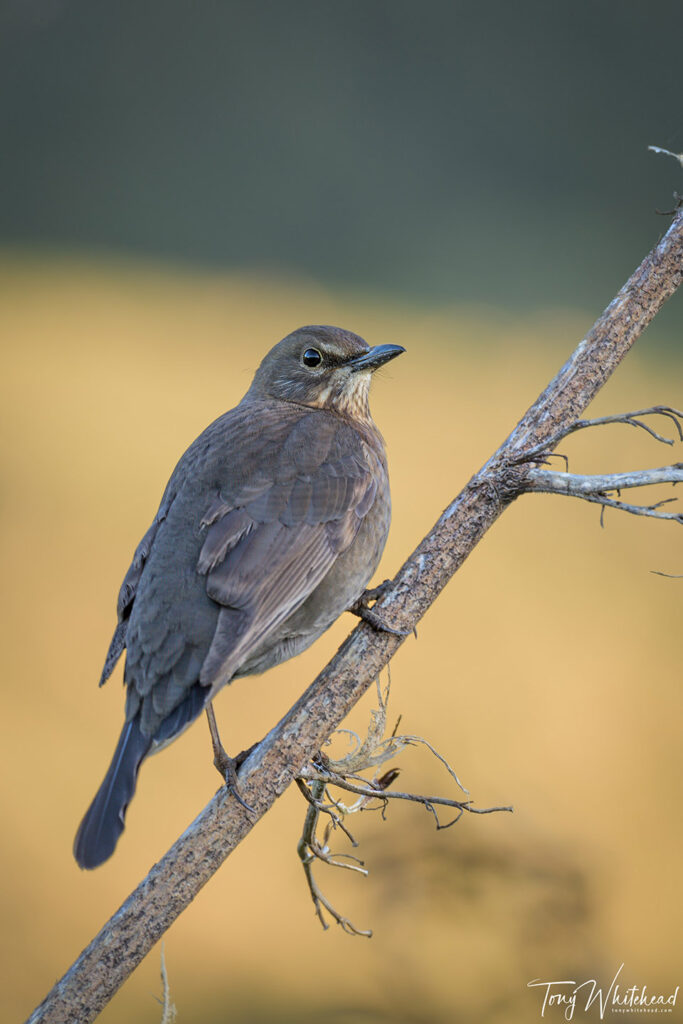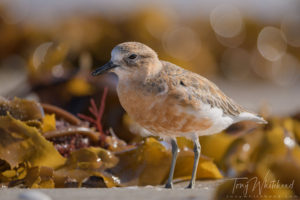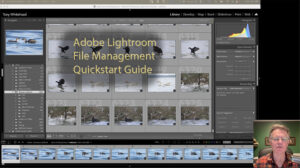I have repeatedly written about how impressed I have been with the Nikkor Z 24-200mm f4-6.3 VR as an excellent light versatile lens. I have found it paired with a Nikon Z7 to be the perfect walk around, travel, street and landscape lens. The announcement of the Nikkor Z 28-400mm f4-8 VR came as a bit of a surprise to me and had me wondering how it would compare to the 24-200 as a versatile travel option for a wildlife photographer.
Looking at the specifications it was obviously a little larger and had me concerned that it would take up significantly more room in a camera bag. Looking at it side by side with the 24-200 it is a little larger and extends much further when zoomed to 400mm but still fits into the same slot in my bag. Having a lens that reaches to 400mm while dropping into a small compartment of a camera bag is a first for me. Previously 400mm lenses always had to lie down and take up the space of 2 or 3 smaller lenses.
The 28-400 looks and feels a little bulkier and slightly heavier (725g vs 570g) but is still a small lens compared to others that have the 400mm reach. The squared lens hood is interesting and quite compact, fitting well into a camera bag slot created with padded dividers.
These next images give an idea of angle of view at the wide and telephoto end of their zoom ranges.


These next 2 images taken fully zoomed in from the same location. The 400mm reach of the 28-400 shows a flock of Canada geese on the hill across the lake.


Using closer subjects again illustrates the wider perspective of the 24-200 and better long reach of the 28-400mm


Zooming in on the Paradise Shelducks in the centre of the frame yielded these images.


These results make the Nikkor Z 28-400mm f4-8 VR a significantly more useful lens if birds are your main interest. 28mm is wide enough for an environmental image and 400mm can pull a subject out of the scene. For landscape use though I would miss the range between 24mm and 28mm. For birds I am generally at the long end of a zoom range and for landscapes at the wide end.
This next image pair shows the extremes of the 28-400mm


So we have two wide range zoom lenses, each with an advantage over the other depending on what your priority is. Is there there an image quality compromise we need to accept for these big zoom ratios? I have always been extremely impressed with the sharpness I have achieved from my 24-200 and am very happy to say that the 28-400 delivers equally sharp results. Sharpness is not something you have to compromise on for the extra reach.
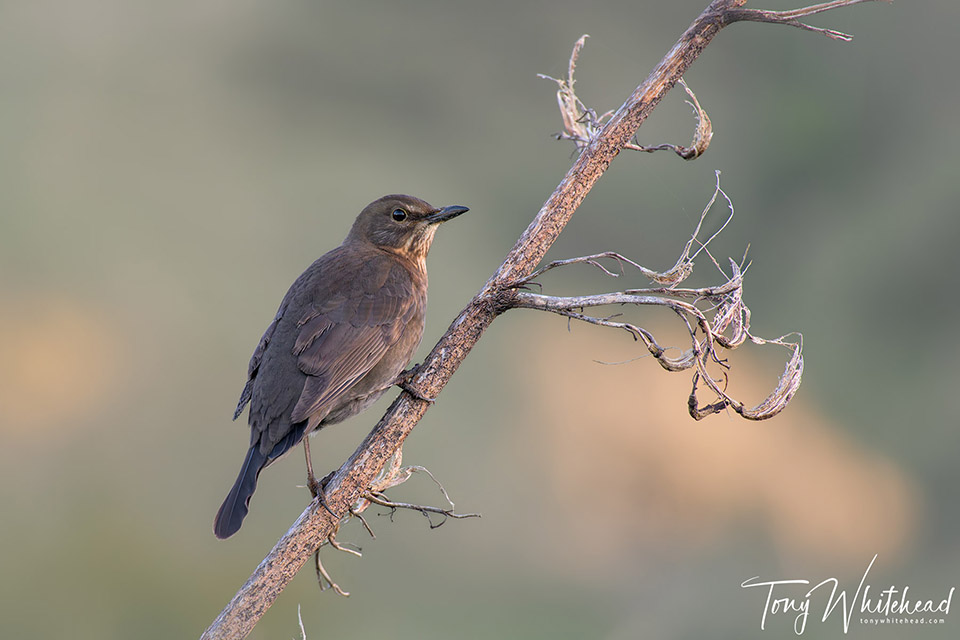
Like the 24-200mm the 28-400mm has in-lens VR which functions synergistically with the in-camera IBIS to give incredibly good image stabilisation. This goes some way to mitigate the f8 maximum aperture of the 28-400mm at 400mm. I’ve always used my 24-200mm as an “f8 and be there lens” so this is no different for the 28-400mm. The 24-200mm is not really a serious bird lens but you could consider the 28-400m to be one and the demands of image stabilisation at 400mm are significantly greater than at 200mm. To test this I tried some images at ISO64, 1/20s f8 in the last light of the evening. This is a risky strategy with subjects that can move and are sitting on perches that can move but I managed a number of tack sharp images from a sequence.
So what is the role of the Nikkor Z 28-400mm f4-8 VR? For a bird photographer wanting the lightest possible gear to achieve 400mm reach while also having a lens that would cover almost all travel photography scenarios it’s a godsend attached to a body like the Nikon Z8. For a bird photographer already travelling with a telephoto (or 2) it is an option that adds some wide angle capacity but is possibly not quite wide enough if you’re wanting to stray into landscape photography. It won’t replace the need for a true wide angle so you may need a 14-30mm in your bag as well but then you did with the 24-200 too despite not having to reach for it often.
The role I really see it shining is as part of a field kit for a biologist/photographer. Prior to Edin’s recent 3 month work visit to the Antipodes the 24-200mm was the best lens for this role and she used it to create some stunning work along with her F mount 80-400mmm (and 50mm f1.8D in manual focus mode!) on the FTZ adaptor. The 28-400m would take the place of both of those zooms and significantly lighten a pack.
